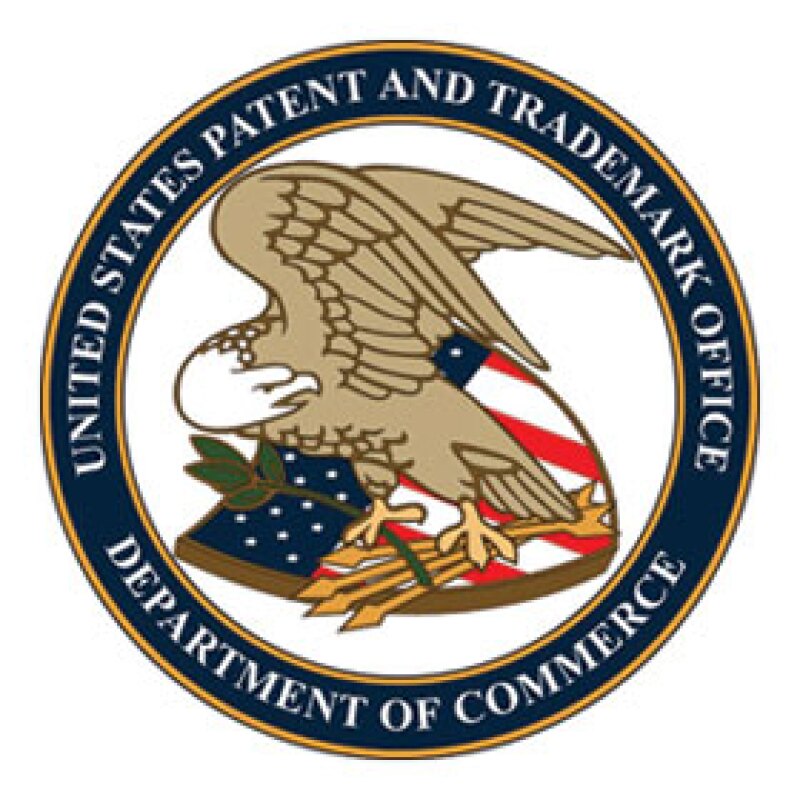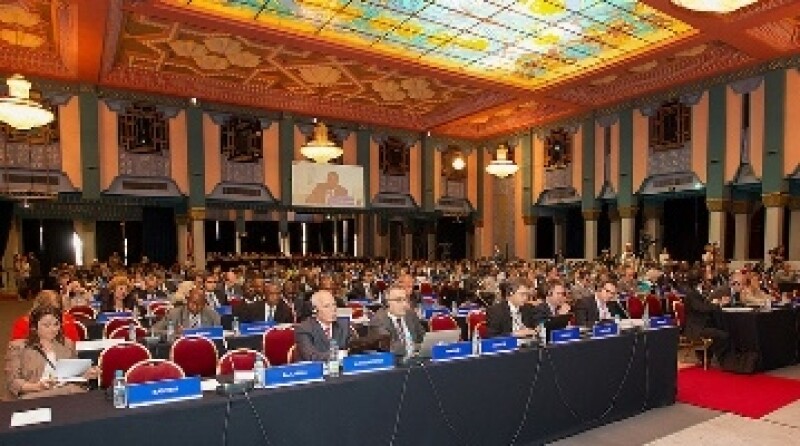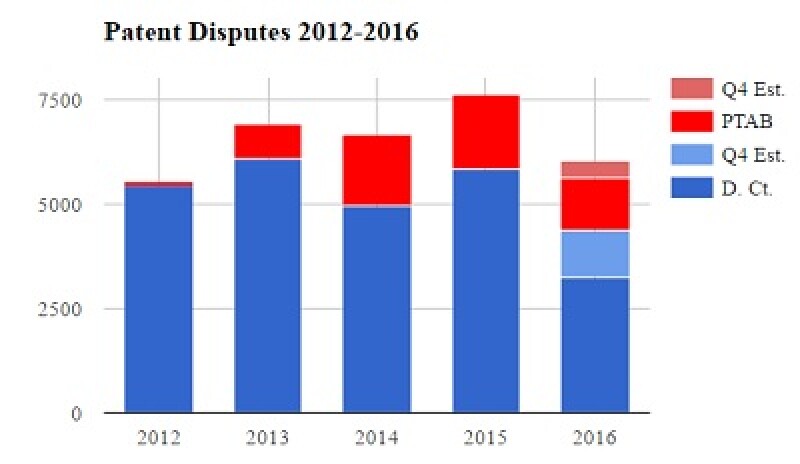Also on the blog in the past week were:
Special focus on PTAB in our October issue
How to protect innovation under sharing economics
We’ve also posted the following articles in the past week (log in via subscription or free trial):
CAFC Judge Mayer: “Alice sounded the death knell for software patents”
Secrets of success for university patent licensing and enforcement
VirnetX awarded $302m in damages against Apple
Domain name system transitions to private sector
Strategies for DTSA trade secrets cases
Unitary Patent and UPC: A progress report (September 2016)
US Supreme Court to hear Slants case
DLA Piper (Canada) and Dimock Stratton combine, and other Americas people moves
Litigation in the ITC: a guide for trade mark owners
Federal Circuit rules it cannot review PTAB assignor estoppel
10 issues to watch at the PTAB
Interview: former MARQUES Chair Tove Graulund
10 highlights from the MARQUES Annual Conference in Villaitana
Redskins petition denied

The US Supreme Court has denied the Washington Redskins’ petition to join The Slants case challenging the USPTO’s ban on offensive trade marks.
The court last week granted cert in Lee v Tam, the case involving Asian-American band The Slants and the issue of offensive trade marks. It will address the question of whether the disparagement provision of the Lanham Act is facially invalid under the Free Speech Clause of the First Amendment.
“Since both cases involved a provision in Section 2(a) of the Lanham Act, the football team hoped to have both cases considered concurrently by the high Court,” explained Mintz Levin. “However, this now means that the outcome of the SLANTS case will have a huge impact on the Redskins’ appeal still pending before the Fourth Circuit. Although the team’s case will not be heard with the SLANTS case, it will have the opportunity to file amicus briefs in the proceeding.”
The Washington Redskins was not the only IP-related petitioner disappointed this week. As the Patently-O blog revealed, the court also denied cert in more than 10 patent cases.
Dennis Crouch said: “Gone are GEA Process (IPR termination decision), Amphastar (scope of 271.e safe harbor) , Commil (appellate disregard of factual evidence), MacDermid (obvious combination), Jericho (Abstract Idea) , Trading Technologies (mandamus challenging CBM initiation), Tobinick (interference), Neev (arbitrator autonomy), Genetic Tech (eligibility), Essociate (eligibility), Dreissen, and Pactiv (ex parte reexamination procedure). Notably, all of the eligibility petitions have been denied.”
USPTO’s proposed fee increases
The USPTO has issued a notice of proposed rule making proposing fee increases to recover the aggregate estimated cost of the USPTO’s patent operations, Patent Trial and Appeal Board (PTAB) operations, and administrative services.
The last major patent fee setting using AIA authority became effective in March 2013. Some important proposals are:
- Large entity utility filing, search, and examination fee rates are proposed to increase to $300 (+$20), $660 (+$60), and $760 (+$40) respectively. Small and micro entity discounts remain available.
- Large entity design filing, search, and examination fee rates are proposed to increase to $200 (+$20), $160 (+$40), and $600 (+$140). Design patents do not pay maintenance fees, and the majority of design applicants are eligible for small and micro entity fee reductions.
- The large entity fee for the first RCE request is proposed to increase to $1,300 (+$100). The large entity fee for a 2nd and subsequent RCE is proposed to increase to $1,900 (+$200). In response to concerns raised by the PPAC last fall upon review of an earlier proposal, the USPTO reduced the fee increases proposed for both of these fees.
- Increases to the PTAB AIA trial fees aimed at better aligning these fees with the USPTO’s costs and aiding the PTAB to continue to meet required AIA deadlines. Even with the proposed fee increases, which are generally at or below the Office’s costs, AIA trials will remain considerably less expensive than traditional litigation.
- Inter partes review request Fee – up to 20 Claims increases to $14,000 (+$5,000)
- Inter partes review post-institution fee – Up to 15 Claims increases to $16,500 (+$2,500)
- Post-grant or covered business method review request fee – Up to 20 Claims increases to $16,000 (+$4,000)
- Post-grant or covered business method review post-institution fee – Up to 15 Claims increases to $22,000 (+$4,000)
The USPTO is seeking comments on both the individual patent fee proposals and the rulemaking goals and objectives. It expects to publish a final rule in 2017.
Patents for Humanity winners announced
The USPTO has also announced the latest winners in the Patents for Humanity programme, which was launched in February 2012.

Entries were received in five categories: medicine, nutrition, sanitation, energy and living standards. Although four of the categories did not produce honourees this year, the USPTO expects that will change in future cycles.
The 2016 Patents for Humanity award winners are:
US Food & Drug Administration – for developing an improved meningitis vaccine production process that’s been used to immunize 235 million people in high-risk Africa countries.
Case Western Reserve University – for creating a low-cost, accurate malaria detection device using magnets and lasers that allows better diagnosis and treatment
GestVision – for developing a quick, simple diagnostic test for preeclampsia, a potentially life threatening pregnancy complication, for use in developing regions
Global Good Fund at Intellectual Ventures – for creating a passive cooler that can keep vaccines cold over 30 days and donating dozens of units to the fight against Ebola and other relief efforts.
Honourable mentions go to:
Sanofi – for researching new malaria drug candidates with shorter, simpler treatment regimens that can potentially counter the growing trend of drug resistance.
Alere – for developing diagnostic assays for rapid and early HIV diagnosis at the point of care in low-resource settings.
Marrakesh Treaty enters into force
The “books for blind” treaty entered into force on September 30, three months after it gained the necessary 20 ratifications or accessions by WIPO member states.

The Marrakesh Treaty to Facilitate Access to Published Works for Persons Who Are Blind, Visually Impaired or Otherwise Print Disabled facilitates the creation and transfer across national boundaries of specially adapted books, such as Braille or large print, for use by visually impaired people.
To mark the entry into force of the Marrakesh Treaty, WIPO has organized a symbolic transfer of accessible books in audio format from Canada to Australia via WIPO’s ABC Book Service. The transfer from the Canadian National Institute for the Blind to Vision Australia means that Vision Australia does not need to reproduce the books themselves, resulting in a cost savings of around USD$2,000 per book.
The Marrakesh Treaty addresses the “book famine” by requiring its contracting parties to adopt national law provisions that permit the reproduction, distribution and making available of published works in accessible formats through limitations and exceptions to the rights of copyright rightholders.
It also provides for the exchange of these accessible format works across borders by organizations that serve the people who are blind, visually impaired, and print disabled. It will harmonise limitations and exceptions so that these organizations can operate across borders.
More than 75 WIPO member states have signed the Treaty, which was adopted on June 27 2013 at a diplomatic conference organized by WIPO and hosted by the Kingdom of Morocco in Marrakesh. For the Treaty to enter into force, 20 ratifications or accessions were required. So far, 22 countries have joined the pact.
Motion to transfer grant rate rises in Texas
An article published by WilmerHale lawyers last week reveals that transfer motion filings in the Eastern District of Texas decreased 50% year-over-year from 2014 to 2015 but the percentage of successful motions increased from 34% to 43%. Some 135 motions were filed in 2014 compared with 63 in 2015.
The success rate is even higher so far in 2016, despite transfer requests increasing. Some 45 motions had been filed as of May 2016, with nearly 57% of motions granted.
“While the likelihood of winning a motion to transfer in EDTX is at an all-time high, this appears to be because defendants have been filing more robust and well-supported motions, not because the court has applied a lower standard,” says the WilmerHale article. “A closer look at all transfer motions filed in EDTX this year reveals that, without a detailed explanation of the associated burdens, defendants are almost certain to lose.”
Michael Smith on EDTexweblog.com agreed with the conclusion that the higher success rate is the result of better-supported motions.
“But I'd also note that as with rulings on 101 motions, motions to dismiss and motions for summary judgment it also reflects the significant bubble of relatively weaker cases filed in 2014 and especially 2015 which largely dissipated locally after the eDekka 101 and 285 rulings around the end of last year and the beginning of this year,” wrote Smith. “Also, the standards for venue motions in patent cases filed in courts applying Fifth Circuit law have been pretty stable for several years now, so the variations aren't because the law has changed or was changing during the period, as I'd argue was the case in 2009-2012-ish.”

In brief
- The IPWatchdog blog brings an example of how not to respond to a USPTO action. Pro tip: for a start, don’t repeatedly use the phrase “You and your f**king a**hole boss”. - Unified Patents reveals that so far in 2016, 4,532 new patent infringement disputes were filed in US district courts or at PTAB. “Total disputes are estimated to be 6,032 by the end of the year,” it says.
- Patexia reveals that the top 25 plaintiff-side law firms represented plaintiffs in 30% of patent suits in 2015, with Morris Nichols Arsht & Tunnell the top firm.










